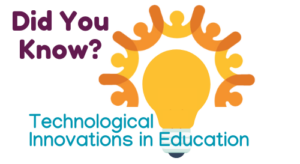AI-Powered Learning Analytics Are Shaping Early Childhood Education and Instruction


 As teachers, we spend a considerable amount of time observing children, tracking progress, and planning developmentally appropriate activities that help scaffold learning for our children. This article explores how we could use AI to help us save time on administrative work and thus focus on more meaningful activities, such as taking care of ourselves and fostering deeper connections with our young learners.
As teachers, we spend a considerable amount of time observing children, tracking progress, and planning developmentally appropriate activities that help scaffold learning for our children. This article explores how we could use AI to help us save time on administrative work and thus focus on more meaningful activities, such as taking care of ourselves and fostering deeper connections with our young learners.
As you read through this article, remember that the goal is not to replace the human touch that is so essential to teaching, but rather to support and enhance it.
Observation is a fundamental skill for early childhood educators, as it allows them to closely monitor each child’s development and tailor their teaching approach to best support individual needs.
Teachers invest significant time and effort into learning how to observe without judgment, avoiding labels, and becoming skilled investigators who can connect their observations to established theories of child development. Renowned theorists such as Piaget, Vygotsky, and others have provided invaluable frameworks for understanding how children learn and grow, and these frameworks serve as essential guides for educators in their everyday practice.
Learning analytics is an area that builds upon this tradition of observation by using data to systematically analyze and understand students’ learning processes. By collecting, measuring, and analyzing data related to students’ interactions and performance, learning analytics can help educators identify patterns and trends, providing valuable insights into each child’s learning journey. In early childhood education, the benefits of learning analytics are particularly significant, as they allow teachers to make informed decisions about their instruction, identify potential areas of concern, and support each child’s unique developmental path.
AI-powered learning analytics might be a game-changer for early childhood educators, providing them with actionable insights to support individual students’ learning and development. Let’s explore a step-by-step example of how a teacher might use AI-powered learning analytics to assess a 3-year-old boy named Ravi.
By leveraging the power of AI-powered learning analytics, early childhood educators can gain a deeper understanding of each child’s unique learning journey, allowing them to provide personalized support and optimize instruction for maximum impact.
While AI-powered learning analytics offer numerous benefits, it’s important to consider potential dangers and challenges associated with their use in early childhood education.
Overreliance on data: There is a potential risk that teachers may become overly dependent on data-driven insights, which could lead to undervaluing their own professional judgment and observational skills. Qualified, skilled, and experienced educators possess a keen ability to observe and discern aspects that might not be easily quantifiable or captured on paper. Teachers have a unique capacity to sense and read between the lines, an ability that may not be replicated by machines.
Privacy and data security concerns: The collection and analysis of student data raise concerns about privacy and data security. Who has access to this information? Is sensitive information protected? How can we avoid potential breaches or misuse of data?
Misinterpretation of data: There is a possibility that teachers or administrators may misinterpret the data provided by AI-powered learning analytics tools, leading to misguided decisions or interventions that may not be in the best interest of the child.
Approach AI-powered learning analytics with a balanced perspective, emphasizing the importance of professional judgment, privacy, and data security in early childhood education.
Don’t forget to take our quick survey to help us better understand the impact of AI on learning and teaching. Your input can make a difference in shaping the future of education. Click the link below to participate in the survey now!